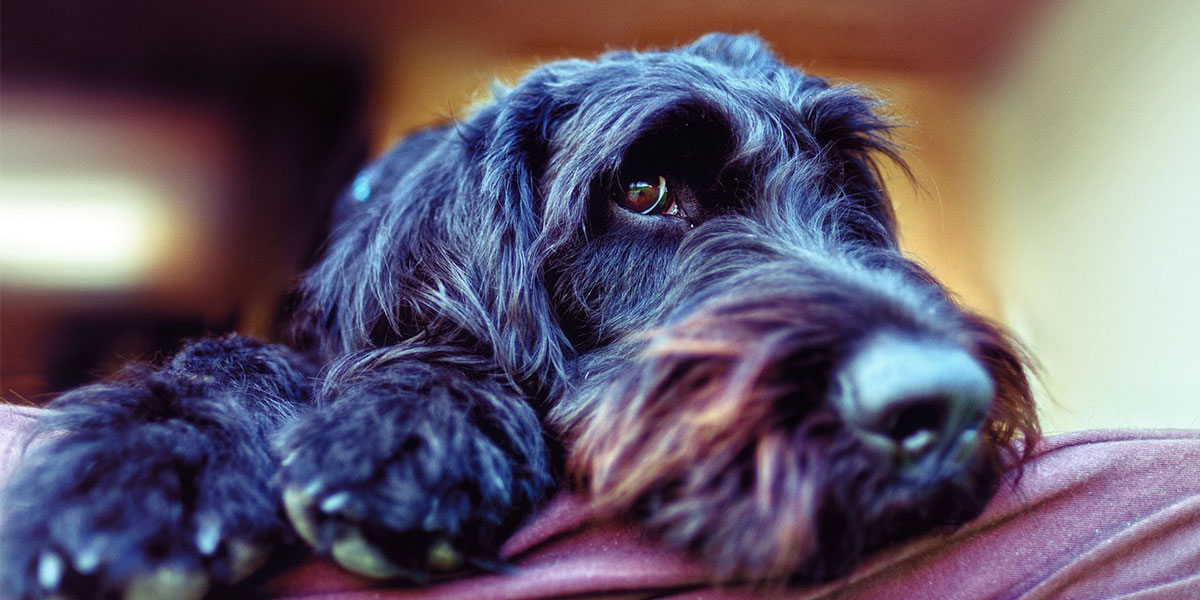Taking too long? Close loading screen.

April 25th
When you bring your new puppy home, locking them up in a crate may seem cruel. But crate training is an important part of the of the housetraining process. It can take some time, but eventually you can make your puppy
But for many dogs, adjusting to time spent alone in a crate can be quite difficult. They may pay at the door or cry out every time your leave them alone. And some dogs may even find a way to escape.
Here, we’ll give you advise on how you can make your puppy love their crate.
One of the best ways of making sure that your dog doesn’t fear the crate is to start slowly. For the first few days they are home, don’t leave them alone in their crate. Instead, lure them into the crate with some treats and leave the door open.
This will help them see the crate as a relaxing, comfortable place, and not as a cage. And you can also add some bedding, blankets, and toys to the crate so that they feel more at home.
A big mistake that new dog owners make is leaving their puppy alone for long periods in a crate. It takes time for a dog to learn how to be alone. That’s why you should start off by leaving them by themselves for only a few minutes at a time.
Put your dog in their crate and leave for 5 minutes. Even if they cry or paw, don’t come back into the room until the set time. Slowly increase the time that you spend away from the cage. Your puppy will learn that you always come back.
Many dog owners try to make the crate as comfortable as possible for their new puppy. But many puppies are not housetrained, and go to the bathroom when left in their crate. All of that nice bedding can quickly start to smell.
Unless you want to change the bedding frequently, you may want to use easily washable towels as bedding for the first few weeks, as your puppy adjusts to going to the bathroom outdoors.
Many first time dog owners will send their puppy to the crate any time they do something wrong. But this is one of the worst things you can do if you are trying to crate train your puppy.
The reason? You’ll make your puppy fear their crate. Remember, you’re trying to make the crate seem like a relaxing, comfortable place. If you send your puppy there as a punishment, they will make them afraid every time they go to their crate.
Your dog may even refuse to go their crate, which can make your life a headache and really slow down the potty training process.
It can be tempting to buy your new puppy as large a crate as possible. You may reason that they will need plenty of room to move around. But a crate that is too big will actually be less comfortable for many dogs.
That’s because they will often go to the bathroom in crates that are too large. And too much space can actually make a puppy restless. You should pick a crate that gives your puppy enough room to lie down and stretch out.
When you first get your new puppy, you may not want to leave them alone. But that doesn’t mean they can’t spend some time in their crate. One good way of doing this is moving their crate around.
This allows you to spend time with your dog as they are in their crate. Your puppy won’t feel alone, so they can gradually adjust to their crate. And you get to spend even more time with your new puppy.
People often wonder what the best type of crate is for their dog. And in most cases, you should opt for a wire crate.
Why? They are see through. This makes them a good choice for puppies that get anxious of being left alone. Once you put them in the crate, they can still see you, which will make it easier to gradually train them to be alone.
And many of them are also collapsible, allowing you to easily move them around. They are also easy to clean, which is great with puppies.
Most dogs will eventually adjust to spending some time alone in their crate. But some dogs will continue to demonstrate signs of distress every time you put them in their crate. No matter what you do, they paw and cry every time they have to go to the crate.
This could mean that your puppy has a more severe case of separation anxiety. Dogs get attached to their owners, and in some cases this attachment causes them to get anxious every time they are left alone.
The symptoms of separation anxiety look a lot like normal behaviors, but are much more intense. Here are some symptoms you should look out for:
If your dog is showing any of these behaviors, that could mean that they have separation anxiety.
If your dog still isn’t taking to their crate, you may want to consider hiring a professional trainer. This may seem like an expensive options, but you might be surprised how affordable trainers can be. And it can make your life much easier, as you won’t have to worry about your dog tearing up their crate and running around the house. A behaviorist can help your puppy by providing more structured training that will help them learn better habits.
Have a crate but still looking for the perfect puppy? Head over to our puppy finder to find your dream dog
Find the Perfect Puppy